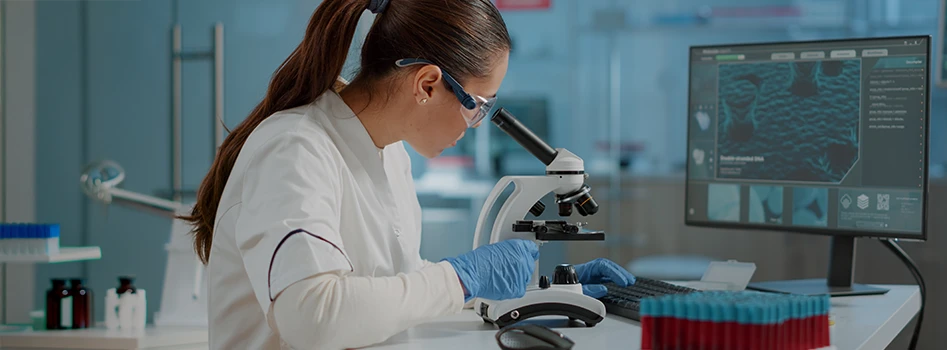Infertility is a growing global health concern, affecting millions of couples who struggle to conceive naturally. With lifestyle changes, medical conditions, and delayed parenthood contributing to rising infertility rates, the demand for advanced solutions has increased. Assisted Reproductive Technology (ART) refers to medical procedures that handle eggs, sperm, or embryos outside the human body to aid conception.
Techniques like IVF, ICSI, and embryo transfer have transformed reproductive medicine by offering hope where natural methods fall short. For students in medical, life sciences, or paramedical fields, understanding ART is essential, not only to grasp its scientific principles but also to explore emerging career opportunities in embryology, fertility care, and biomedical research.
Understanding the basics of ART
Assisted Reproductive Technology (ART) involves medical techniques where eggs, sperm, or embryos are handled outside the human body to assist conception. ART requires advanced laboratory intervention and the process relies heavily on controlled environments, specialized equipment, and expertise in embryology to assure successful fertilization and embryo development.
Effective ART also depends on close collaboration between clinicians, embryologists, and laboratory staff to combine medical care with precise scientific procedures. For students, learning these fundamentals provides a strong foundation for understanding how modern reproductive medicine bridges biology, technology, and patient care.
Common ART procedures
In vitro fertilization (IVF)
IVF is the most widely known ART technique. It begins with ovarian stimulation to produce multiple eggs, followed by egg retrieval and fertilization with sperm in a laboratory dish. The resulting embryos are cultured for a few days before one or more are transferred into the uterus. IVF is recommended for conditions like blocked fallopian tubes, severe endometriosis, or unexplained infertility. Although success rates vary, IVF has given millions of couples the chance to conceive, making it the backbone of modern fertility treatment.
Intracytoplasmic sperm injection (ICSI)
ICSI is particularly useful for male infertility. In this procedure, a single healthy sperm is injected directly into an egg under a microscope, increasing the chances of fertilization even with very low sperm count or poor motility. ICSI requires advanced technical skills and precise lab work, making it a crucial innovation in ART.
Frozen embryo transfer (FET)
FET involves the use of embryos that were previously created and cryopreserved. These embryos are thawed and transferred into the uterus during a later cycle. FET offers flexibility, reduces the need for repeated ovarian stimulation, and allows better synchronization with the woman’s uterine lining. It also enables couples to use embryos from an earlier cycle, lowering costs and emotional strain.
Donor programs
Donor eggs, sperm, or embryos are used when couples cannot produce viable gametes. For example, donor eggs may be needed in cases of ovarian failure, while donor sperm can help overcome severe male infertility. Embryo donation provides an option for couples with both male and female fertility challenges. Donor programs raise ethical, emotional, and legal considerations, but they have expanded opportunities for parenthood.
Surrogacy
In gestational surrogacy, embryos created through IVF are transferred into a surrogate’s uterus, where she carries the pregnancy for the intended parents. This is different from traditional surrogacy, where the surrogate’s own egg is used. Surrogacy is an option for women with absent or severely damaged uteruses, recurrent pregnancy loss, or medical conditions that make pregnancy unsafe. However, it is surrounded by ethical debates and legal restrictions that vary across countries.
Emerging techniques in ART
The field of ART continues to evolve. Preimplantation Genetic Testing (PGT) allows embryos to be screened for genetic disorders before transfer. Fertility preservation techniques, such as egg or ovarian tissue freezing, help cancer patients and those delaying parenthood. Time-lapse embryo imaging and the use of AI for embryo selection are the latest innovations, promising higher success rates and more personalized treatments.
`Risks and challenges of ART
Medical risks
- Ovarian hyperstimulation syndrome (OHSS) due to ovarian stimulation.
- Increased chances of multiple pregnancies (twins, triplets), which can cause complications for mother and baby.
Emotional stress
- Uncertainty of success across repeated ART cycles.
- Psychological impact on couples undergoing treatment.
Financial strain
- High cost of treatments like IVF, ICSI, and donor programs.
Ethical and legal issues
- Debates over embryo disposal and donor rights.
- Surrogacy laws and regulations vary across regions.
Student perspective
- Understanding these risks highlights the complexity and multidisciplinary nature of reproductive medicine.
Future of ART
The future of ART is shaped by innovation and technological advancements. Personalized fertility treatments are becoming more common, allowing procedures to be tailored to individual patients for higher success rates. AI and automation are increasingly used in embryo selection to improve outcomes. Additionally, fertility preservation, including freezing ovarian, sperm, and egg tissue, is gaining attention worldwide, particularly for patients with oncofertility. Continuous developments in ART technologies and laboratory practices promise exciting opportunities for students and professionals entering this evolving field.
Conclusion
Assisted Reproductive Technology (ART) plays an important role in addressing infertility, offering hope to millions of couples worldwide. Understanding ART equips students with knowledge essential for careers in healthcare, research, and biotechnology. As the field evolves with innovations like AI-driven embryo selection, personalized treatments, and fertility preservation, it helps students to stay curious and engaged.
Transform your career in ART with Momsoon Academy. Learn modern IVF, ICSI, and embryo transfer techniques through practical training, and become a skilled professional in embryology and reproductive medicine.






